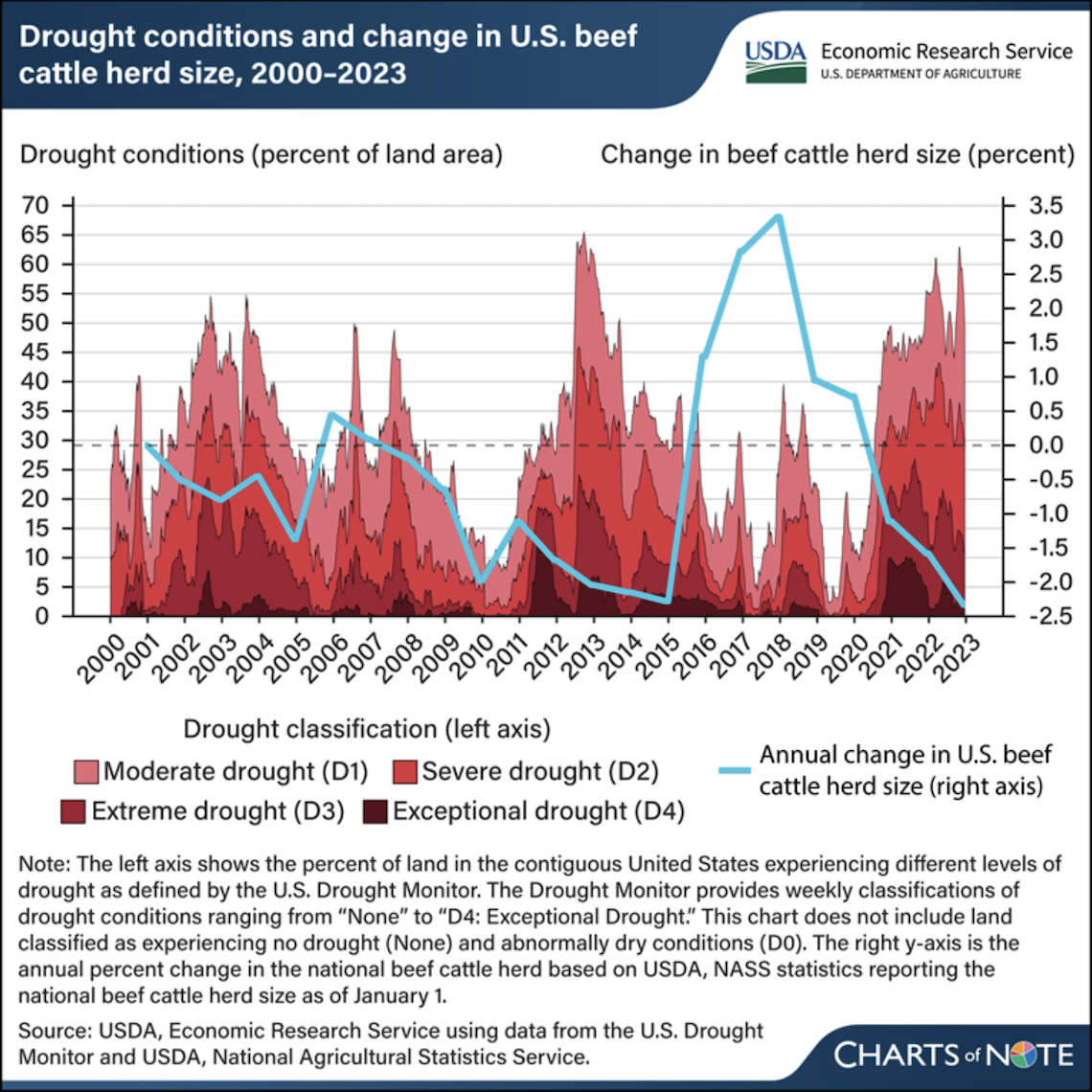



Drought conditions influence US beef cattle herd size - USDA
Beef cattle operations rely on forage to feed herdsUS beef cattle operations that rely on precipitation to grow forage to feed their herds are particularly vulnerable to drought, according to a recent USDA cattle report. When drought conditions diminish forage production and availability, beef cattle producers often must buy supplemental feed and forage or reduce their herd size.
Periods of more intense drought are associated with decreases in the US beef cattle herd size, such as when the national beef cattle herd shrank about 1–2% a year during drought between 2011 and 2015.

This chart also shows that cattle numbers grew in the less intense drought years of 2015 to 2018.
Other factors outside of drought conditions also influence changes in the beef cattle herd size, including feed and forage prices, extreme precipitation events, supply chain issues, and the natural life cycles of livestock (i.e., the cattle cycle).
To support livestock producers negatively impacted by drought conditions, the USDA administers a range of programs such as the USDA, Farm Service Agency’s Livestock Forage Disaster Program (LFP), which provides payments to livestock producers whose forage production is diminished by drought. LFP eligibility is determined by drought conditions reported by the US Drought Monitor. Many livestock species, ranging from beef cattle to reindeer, are eligible for LFP payments. LFP payment rates are species specific and designed to cover about 60% of monthly feed and forage costs.
For more about the US beef cattle herd, the LFP, and the potential impact of LFP payments on the Federal budget, see the USDA, Economic Research Service report The Stocking Impact and Financial-Climate Risk of the Livestock Forage Disaster Program, published in January 2024.



